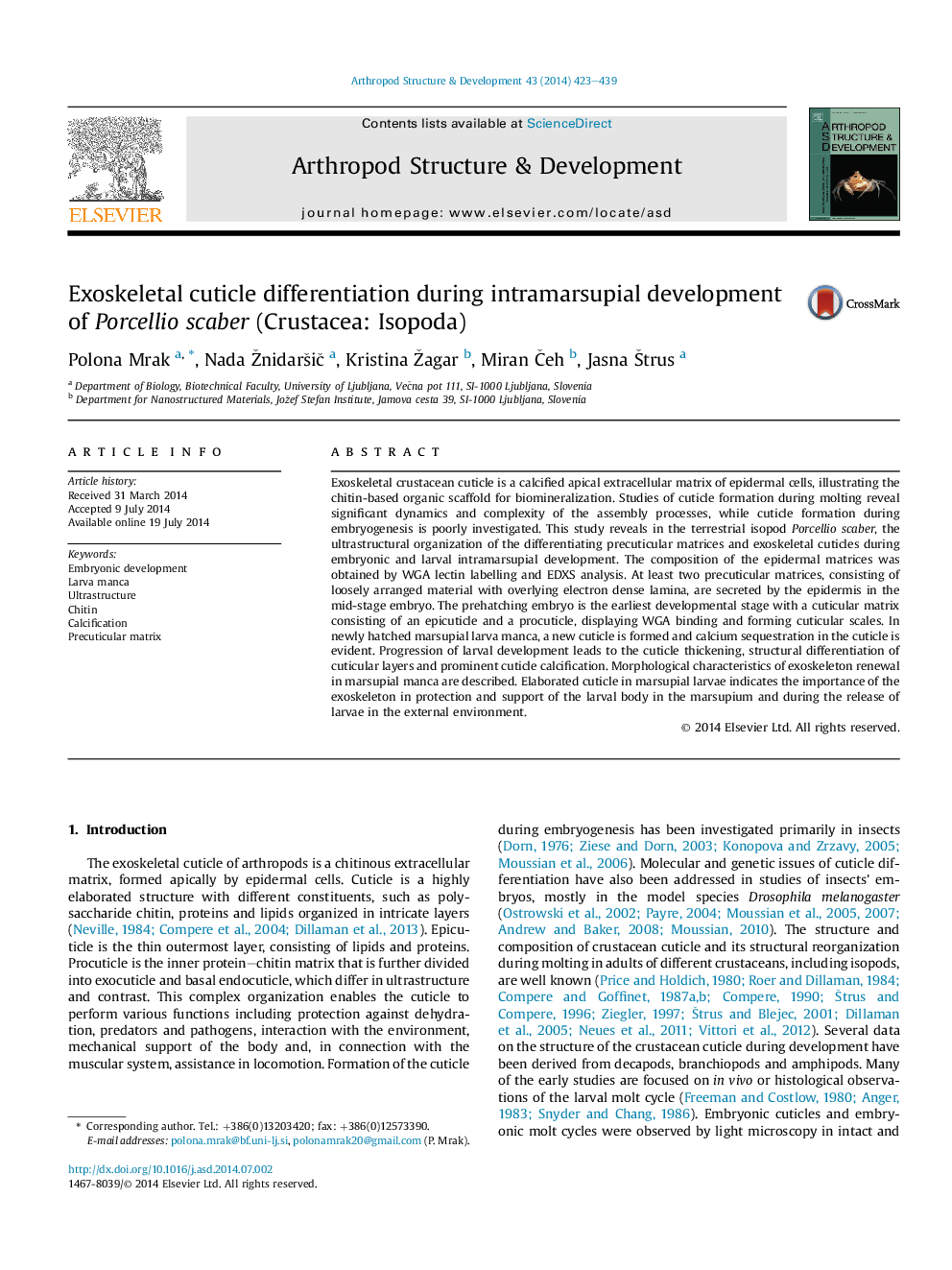| Article ID | Journal | Published Year | Pages | File Type |
|---|---|---|---|---|
| 5888698 | Arthropod Structure & Development | 2014 | 17 Pages |
Abstract
Exoskeletal crustacean cuticle is a calcified apical extracellular matrix of epidermal cells, illustrating the chitin-based organic scaffold for biomineralization. Studies of cuticle formation during molting reveal significant dynamics and complexity of the assembly processes, while cuticle formation during embryogenesis is poorly investigated. This study reveals in the terrestrial isopod Porcellio scaber, the ultrastructural organization of the differentiating precuticular matrices and exoskeletal cuticles during embryonic and larval intramarsupial development. The composition of the epidermal matrices was obtained by WGA lectin labelling and EDXS analysis. At least two precuticular matrices, consisting of loosely arranged material with overlying electron dense lamina, are secreted by the epidermis in the mid-stage embryo. The prehatching embryo is the earliest developmental stage with a cuticular matrix consisting of an epicuticle and a procuticle, displaying WGA binding and forming cuticular scales. In newly hatched marsupial larva manca, a new cuticle is formed and calcium sequestration in the cuticle is evident. Progression of larval development leads to the cuticle thickening, structural differentiation of cuticular layers and prominent cuticle calcification. Morphological characteristics of exoskeleton renewal in marsupial manca are described. Elaborated cuticle in marsupial larvae indicates the importance of the exoskeleton in protection and support of the larval body in the marsupium and during the release of larvae in the external environment.
Related Topics
Life Sciences
Agricultural and Biological Sciences
Insect Science
Authors
Polona Mrak, Nada ŽnidarÅ¡iÄ, Kristina Žagar, Miran Äeh, Jasna Å trus,
